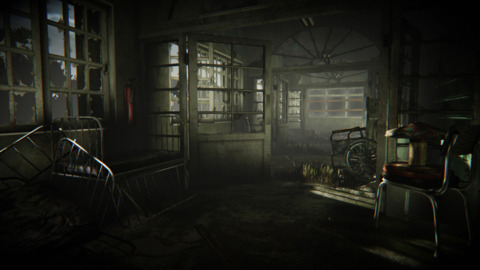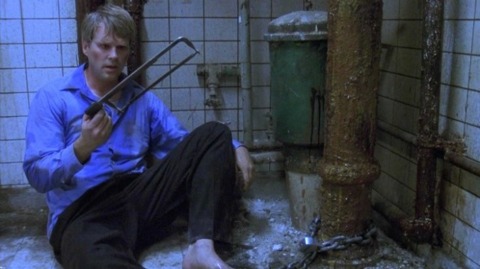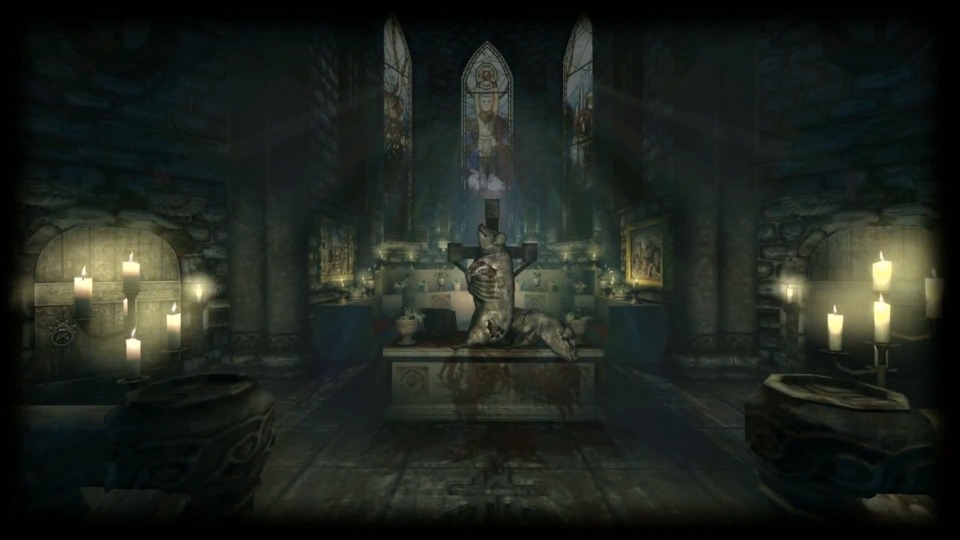Help I'm dying!
By amazingafroman 20 Comments
Death sucks. Its sucks in real life and it really sucks in video games. However it sucks the most in horror games. In horror games if an enemy kills you once it's a horrifying, pants wetting experience. Then you have 20 seconds to relax, catch your breath then you're dumped back in. Then shit! Your jumped again,, and it still scares you but you're like "OK let's try again.” So after another 3 attempts you're frustrated and most importantly you're not scared any more. That's not a good thing, not being scared shit less. No longer being oppressed by the scenario you're being presented by the developer. The game has basically lost all the terror. The terror that's kind of important in a horror game.
So many games have tried to change that. Games like routine or daylight, use mechanics to avoid losing the scare. Mechanics like randomly generated levels (Daylight) or permadeath (Routine). Both mechanics have their benefits and they both have their disadvantages.
Permadeath: Is a concept made popular by games like UFO: Enemy Unknown, Fire Emblem and basically every game under the rogue-like moniker. The idea behind permadeath is that when your character dies they die permanently. Hence the name permadeath. In horror games It can be really effective, creating more pressure on the player to stay alive cause if they die they they die and have to start again.
So the downside is that if the game is long, and the player dies like near the end. Its becomes frustrating for the player. It makes all their progress they made over the course of the game redundant. it make playing again pointless and loses the all important scare factor.

Randomly generated elements: This is a relatively new idea in horror games. Having elements of the game be random and change each time the player plays. Games like slender: the eight pages and daylight have used randomly generated elements to various degrees of effect. In certain circumstances it can be a very oppressing and evil tool to create horror moments. Changing enemy placements or item locations or even changing the entire level can create a scary and unsettling tone for the player, as well as opening up re-playability to the game.
But like permadeath there's a downside to it. Horror games work if the tone and game systems are in sync with each other. Depending on what you're generating randomly can affect the atmosphere of your game. For example if you're generating the levels randomly, they can become inconsistent breaking the immersion of the game and its tone.
Using these systems effectively a team can create a horror experience that would truly be new and different. How would they use these systems effectively? It all comes down to the narrative. How they would frame the game. Most horror games seem to forget that the game play and the narrative need to refer back to one another. They need to mesh or else the game can fall apart. For instance the game outlast the player character is a journalist and is recording his entire experience in the facility.
So as the player you spend lots of time looking through a camera, do the developer use this idea in a way that's new or different? Nope, the camera acts as an glorified torch. With it helping you see the environment and occasionally let the character write down his thoughts... This being particularly odd, as the game is framed as taking place in the present tense not past tense. The camera mechanic is only really there for effect, the effect being a found footage aesthetic and as a torch.
Weirdly enough this comes back to a trend that's occurring in video games, a trend that came with a word that many bloggers and journalists last year began to use. That word was ludonarrative dissonance. Im not going to go into detail about why this is a problem or what it means to you the gamer. What i will say is that horror games are notorious of this and is usually what breaks the game.

Now what does this have to do with dying in Horror games? well everything. From other texts that we would associate with horror, death is usually the ultimate escape for the main character. Death lets them escape the horror surrounding them, it is presented as a choice for the character, framed as the only “good” way out. I say its the only good way out but in horror any choice you're presented is always another shade of black. The film saw made this most apparent, presenting them a choice, forcing the characters to either die or do something horrible to themselves/others so they can escape. With the true horror being that the character will have to live with the guilt of what they have done to for the rest of their lives.
In horror games death is a punishment, not a choice for the player. When the player dies, they are forced to relive the same situation over and over until they are successful. The player could read this as something that is horrifying, but in actuality its nothing more than frustrating. in a horror game the designer should want you to live so you would always be scared, always facing the terrifying moments they are presenting you. When the designer introduces death as a fail state instead of a choice they are indirectly making the game less scary and increasing the levels of frustration of the player. Because death in video games isn't scare like it is in real life, by the nature of it being a video game the player knows its not over, that they can just start again and continue until they succeed.
I have often found horror games where its harder to die in to be more scary. For example when I was playing last years “Amnesia: A machine for Pigs”. I rarely died during the 3 hours I played. However even without that fear of dying I still dreaded every corner, every time that phone rang, hearing the haunting sounds of the pigs, the children and even the games score, sent chills down my spine. Even though this game has the ability for the player to die, it happens so rarely that you really had to try to get yourself killed.

So what am i trying to say here? well where most designers see most players frustration and dissatisfaction with horror games coming from them not being “scary enough. so to fix it they try new mechanics like permadeath, randomly generated elements, no combat, ect... when the actual problem is death itself and how they tie the games narrative to its game play. if designers looked at horror movies they would see that death is less scary than the horrors the characters are being presented. In a horror game death shouldn't be a punishment that makes the player retry the “challenge” it should be a choice of the player, they should be presented the choice to end this twisted vision of the games designers.

Log in to comment